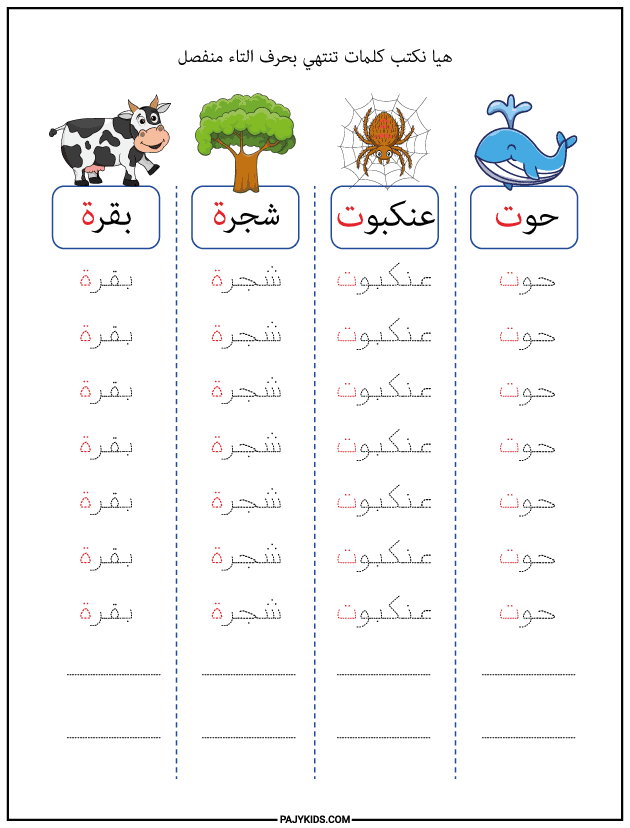When Learning Arabic Alphabet, one of the first and most important steps is understanding how letters change depending on their position in a word. The letter Tāʼ (ت) is a prime example of this flexibility. It has distinct shapes when it appears at the beginning, middle, or end of a word. For anyone learning Arabic alphabet, recognizing these forms is essential for reading and writing correctly. This article focuses on the different shapes of the letter Tāʼ and how they function in Arabic script.
Your First Step in Learning Arabic Alphabet: The Letter Tāʼ Explained
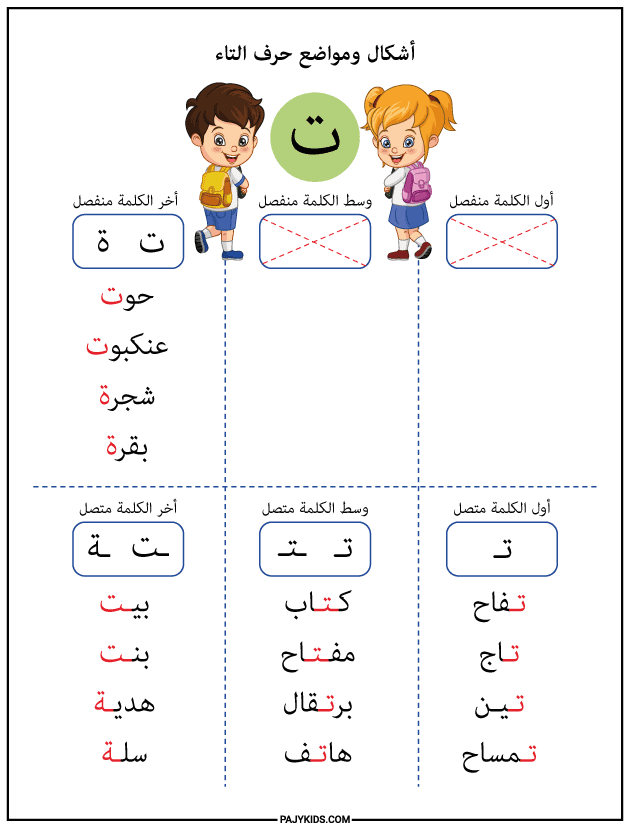
- The Initial Shape of Tāʼ: تـ
In the beginning of a word, Tāʼ takes the form تـ, where it connects to the next letter. This form is easy to spot thanks to its two dots above the looped curve. Words like تفاحة (apple) or تلميذ (student) begin with this initial shape. For students learning Arabic alphabet, mastering this beginning form is the gateway to writing and reading simple Arabic words confidently.
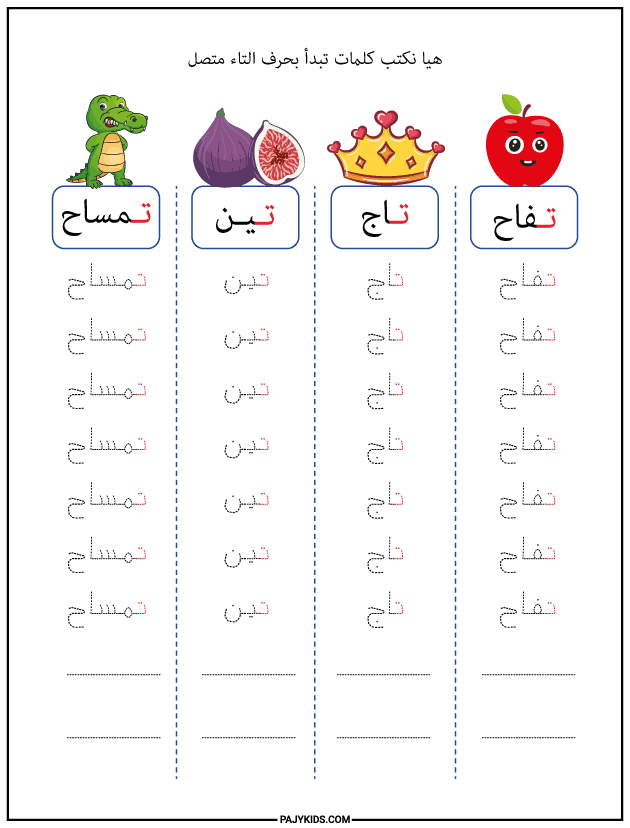
- The Medial Shape of Tāʼ: ـتـ
When Tāʼ appears in the middle of a word, it connects to the letter before and after it. Its shape becomes ـتـ, smoothly blending into the flow of the word. For example: كتابتي (my writing) or مكتبة (library). For those learning Arabic alphabet, this middle form is crucial to identifying full words and improving fluency in reading Arabic texts.
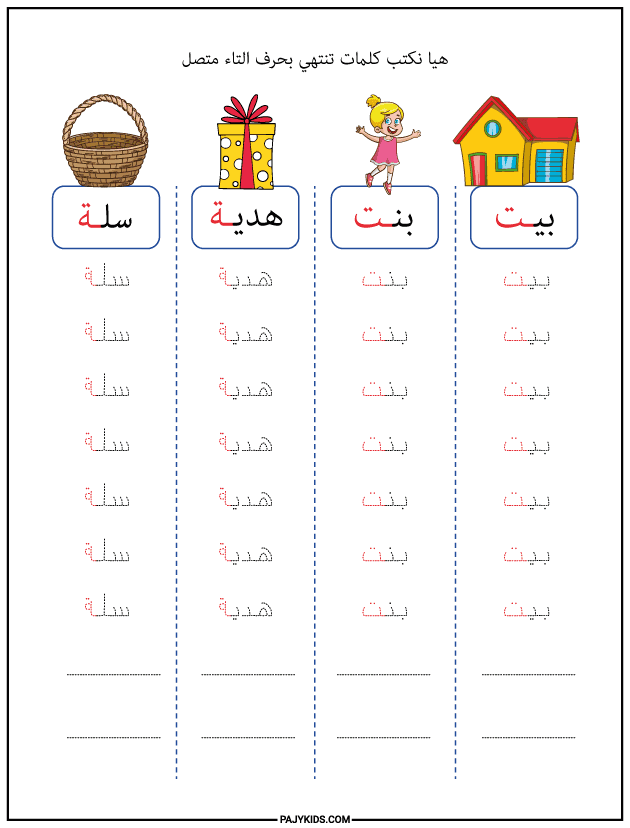
- The Final Connected Shape: ـت
If Tāʼ comes at the end of a word and is attached to the letter before it, it takes the form ـت. Words like بنت (girl) or بيت (home) demonstrate this shape. Recognizing this version of Tāʼ helps learners decode words correctly during reading and writing exercises. It’s a vital step in learning Arabic alphabet effectively.
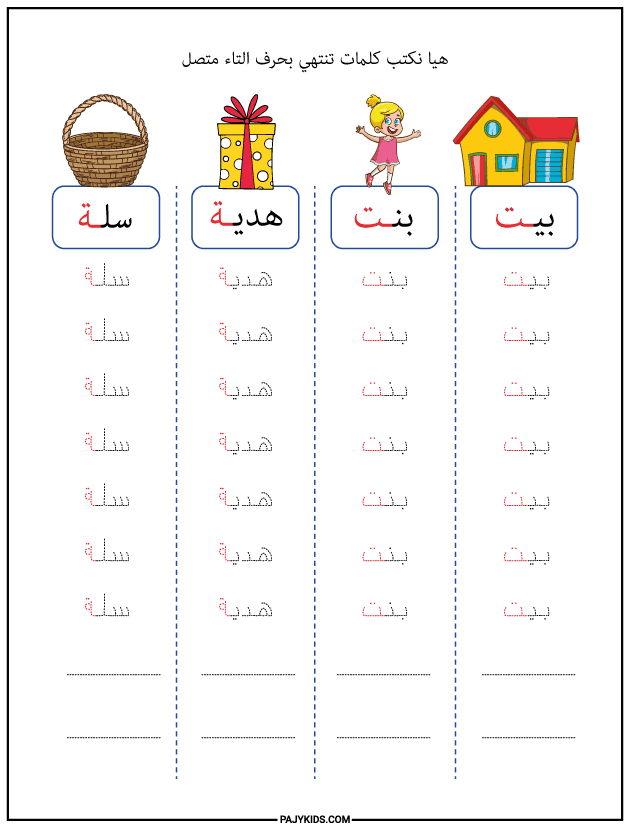
- The Final Isolated Shape: ت
Sometimes, Tāʼ appears at the end of a word without connecting to the letter before it, especially after non-connecting letters. In such cases, it keeps its basic shape ت. Examples include بقرة (cow) and حوت (whale). Identifying this standalone form reinforces a learner’s understanding of letter connections while learning Arabic alphabet.
